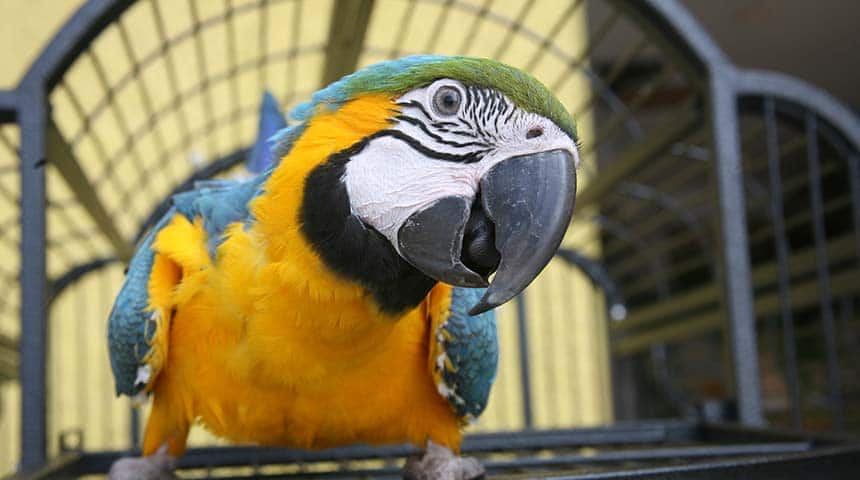
Transmission
Infected animals excrete the infectious agent in their droppings and respiratory secretions. Therefore, contamination can occur without direct contact. Toys can be contaminated and you can also act as a carrier for the virus. If you have been in contact with an infected bird, it is necessary to change your clothes and take a shower before handling your bird.
Clinical Signs
Clinical signs appear within 10 to 14 days of becoming infected and vary depending on the strain of virus involved.
The less virulent strain causes an infection of a progressive nature. The virus affects the kidneys, resulting in increased water in the bird's droppings and increased water consumption. The respiratory system can also be affected. There will be a runny nose, runny eyes and sneezing. Most birds affected by this strain usually manage to fight the infection, but some will need a little extra help. Supportive care requiring hospitalization is advised. Other birds will show no clinical signs; they become asymptomatic carriers. The danger with these individuals is that they will contaminate their environment and infect other birds without being suspected. This is why it is crucial to screen your bird for the 4 diseases during its first health examination and to place it in quarantine for the first month at home.
The more aggressive strain causes a sudden infection where few clinical signs are observed before the animal dies within a few hours of onset. The classic manifestation of this type of infection is the bird that "drops dead" all of a sudden.
Diagnosis
There are several ways to detect the presence of this virus in birds, all tests being complementary to each other and not optional. First of all, antibody detection can detect infections that have been present for at least 2 weeks. The animal may have been infected years ago and may have fought the disease effectively, which accounts for the presence of antibodies in its blood. The search for the agent in the blood completes the antibody test. In fact, the presence of the virus in the blood combined with the presence of antibodies indicates that the animal is currently affected and that it is not an old infection. Therefore, both tests must be done together to accurately tell us the infection status of the bird. Unfortunately, the more aggressive form of this virus acts too quickly for the tests to be performed before the bird dies. Sudden death is characteristic of this condition and is always suspected in these circumstances.
Treatment
Unfortunately, there is no treatment to cure the infection. However, supportive care can be given where the animal is infected (fluid therapy, covering antibiotics, supplements to stimulate the immune system).
Prevention
There is a vaccine (unavailable in Quebec) and is only administered in the event of an epidemic. However, it is not 100% effective and only protects the bird for 7 months.

